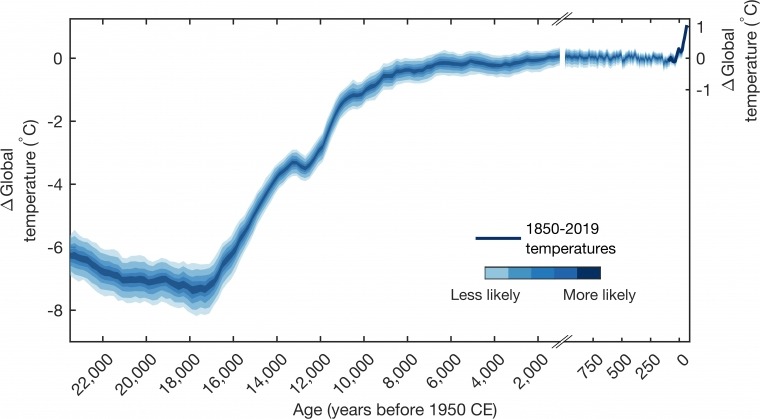A New Study Finds The Earth Has Warmed Much Faster In The Last 150 Years
Researchers from the University of Arizona have conducted a study aiming to reconstruct the earth's climate since the last Ice Age, which occurred about 24,000 years ago. Their study was recently published in the journal "Nature" and focused on three main findings. The critical finding in the study was verification that the main drivers of climate change since the last ice age are increasing greenhouse gas concentrations and the loss of ice mass on ice sheets around the world.The study also suggested that a global warming trend has occurred over the last 10,000 years, which claims to have settled the debate among scientists on whether the last 10,000 years were warmer or cooler. Another of the key findings in the study is that the magnitude and rate of global warming over the last century and a half has far surpassed the magnitude and rate of temperature changes over the last 24,000 years.
University of Arizona geosciences associate professor Jessica Tierney, who also co-authored the study, says the team's reconstruction implies current temperatures on the planet are unprecedented compared to the past 24,000 years. Furthermore, Tierney believes the data suggests the speed of global warming caused by humans has occurred faster than any other phenomena in the last 24,000 years.
In their study, the researchers created global temperature maps looking at changes occurring every 200 years going back over the last 24,000 years. Researcher Matthew Osman says the maps the team created are "really powerful," making it easy for people to explore temperature change across the earth over the 24,000-year evolution of the planet. In their efforts to reconstruct temperatures in the past, researchers utilized two independent data sets.

The data sets included temperature data gathered from marine sediments and computer simulations of the climate in the past. In the marine sediments, the team looked for chemical signatures providing information about past temperatures. For example, temperature changes can affect the chemistry of the shells of animals that died thousands of years ago.
Project scientists admit that is not a perfect method, but it's a strong starting point. The computer simulations offer data on climate in the past utilizing the best understanding of the physics of the climate system, which again scientists admit isn't perfect. However, the team's method is called data assimilation, and they point out the technique is commonly used for weather forecasting. However, we all know how inaccurate weather forecasting today can be.
With data gathered about the change in the Earth's climate for the past 24,000 years, the team of researchers is now applying the technique to looking at temperature data going even farther back in the planet's history. Their goal is to apply the same methodology to looking at climates in the distant past that were warmer than the Earth today. Whether or not humans have caused global warming or if it's just a process the earth goes through over tens of thousands of years is something that has been debated. Scientists worldwide are utilizing various techniques and data to try and solve that question once and for all.
If the researchers could apply their technique to learning about points in the distant past when the earth was warmer than it is today, perhaps we can gain new insight into what caused the periods of warming and cooling on the planet. Massive amounts of time, effort, and money are being put into studying and preventing climate change around the world, and more data can help fine-tune methodologies.
